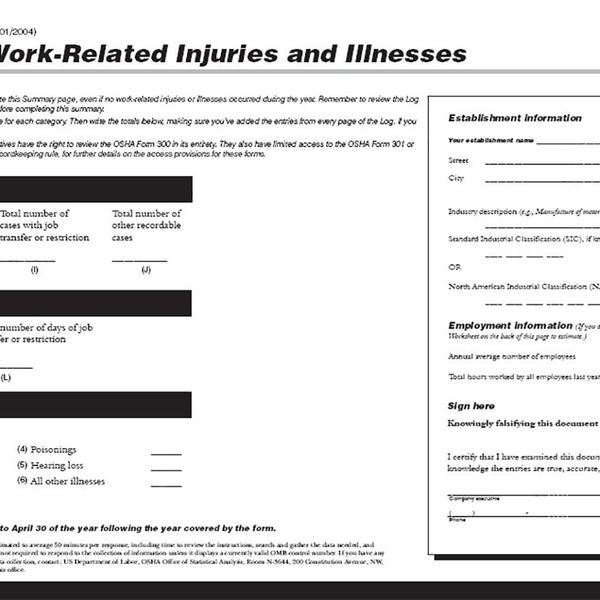Can a case of the flu “bug” land on my OSHA log?
We know that healthcare workers are more susceptible to OSHA recordable infectious diseases from close contact with sick people and viruses because of their work activities with sick patients. But what about the average worker who gets the winter flu bug? Is that recordable?
Clarifying recordability
Seasonal influenza (flu) is extremely common, especially during the winter season. With almost 30 million cases each year, this contagious respiratory illness can easily infiltrate the workplace. Flu can be spread from direct contact with others, sneezing, coughing, or simply talking to an infected person. Symptoms can range from a mild runny nose to hospitalization due to complications from the virus. So, when does the flu become recordable on the OSHA log?
OSHA's recordkeeping regulation at 1904.5(a) requires employers to consider an illness to be work-related if an event or exposure in the work environment either caused, contributed to, or significantly aggravated a pre-existing illness. Work-relatedness is presumed for illnesses resulting from events or workplace exposures unless they fall within one of the exceptions listed in the standard. The common cold and flu is one of those exceptions.
Section 1904.5(b)(2)(viii) states that employers are not required to record injuries and illnesses if, ". . . the illness is the common cold or flu. The exception for cold or flu cases applies even if the illness was contracted at work or outside of work. However, contagious diseases such as tuberculosis, brucellosis, hepatitis A, or plague are considered work-related if the employee is infected at work.
While OSHA's regulations don’t require the employers to record flu cases, employers should never assume the recordability exception without a careful look at each instance. Employers should make every effort to investigate cases of illnesses to rule out any underlying issues that may be work-related, such as the exposure to hazardous substances that could be creating chemical sensitization which may mimic flu-like symptoms.
Additionally, employers should seek an opinion from a medical professional to confirm an illness is seasonal influenza. The illness may meet recording criteria if it is determined as significant following a diagnosis by a physician or other licensed health care professional, even if it does not result in medical treatment beyond first aid or other recordable criteria.
| Not sure if an incident is a recordable versus a reportable? Check out our article, "Recordable and reportable are the same, right?" |
Understanding the regulations
OSHA’s Bloodborne Pathogens standard at 1910.1030 has been effective for worker protection from exposures to blood or other potentially infectious material (OPIM) like saliva, tears, or other bodily fluids. However, the standard doesn’t address the flu “bug.”
A standard has been considered for consistent management of workplace transmission-based infection control. OSHA has published an Infectious Disease Request for Information (RFI), Stakeholder Summary Report, and Small Business Advocacy Review (SBAR) Panel Final Report that demonstrate a focus on worker protection from infectious diseases. These reports and information on the Agency’s Notice of Proposed Rulemaking (NPRM) are available at www.osha.gov/infectious-diseases/rulemaking. In the meantime, employers have a duty to protect workers from recognized hazards under the General Duty Clause.
Key to remember: Employers are not required to record on the OSHA 300 Log when an employee has the flu or common cold, regardless of whether the illness resulted from a workplace exposure.



















































